Our team of professionals has the comprehensive field expertise needed to accurately assess your mold testing needs. Our mold testing service identifies if mold hazards are present and are contributing to the poor indoor air quality of your location. If you have mold concerns—whether you’re buying a new property or suspect something at your location—our testing can tell you if mold results are at a health-concerning hazard level or not.
Reliable, accurate and expedited service.
Whether you’re a property owner, manager, or contractor who needs certified mold testing services, you can trust Adviro’s team of technicians to get the job done.
As a third-party testing company, you can be assured that our results are non-biased because we only do the testing. We never provide abatement or remediation services. This provides our clients with extra reassurance and legal protection that Adviro is only interested in finding accurate results, regardless of the scope of work or who hired us.
Keep your commercial office environment healthy.
The air quality inside your office may be questioned, especially if there are unidentifiable odors. Air quality testing for mold is a recommended place to start investigating your office’s indoor air quality. We’ll guide you through the commercial mold testing process needed to keep your employees, customers, and the environment safe. At the same time, our well-documented reports will support your due diligence throughout the process. For more information on mold in the workplace, here is a helpful guide from OSHA.
Mold Testing & Reporting Procedure.
When contacting us, we’ll discuss your needs and explain how we can help. Additionally, we’ll include an itemized proposal of our mold service.
Once you choose to work with Adviro by signing the proposal, we’ll immediately contact you to schedule your appointment.
Our mold technician will visit your property for environmental sampling, material identification, and documentation of the process. We’ll test for the presence of mold using a non-invasive air sampling method. Additional air sampling, swab samples, and/or tape-lift samples can be included for a more robust detailed report. These samples will be prepared for independent laboratory analysis.
Once all results are gathered, we’ll deliver clear, concise, and detailed reports with pictures, diagrams, certifications, and documentation compliant for regulatory agencies. The detailed information provided in our reports delivers and shows due diligence for compliance as well as any possible future litigation.
Please review your report.
Our consultants/technicians are available or will contact you for further review of any specific details related to your project. At this point, with the specific details, we can consult regarding potential strategies for your next course of action.
Mold Services:
- Real Estate/Property
– Screening (for Health) - Clearance Post Remediation
Why Go Adviro?
- Certified Environmental Experts
- Responsive Scheduling
- Quick Turn-Around Reporting
- Concise, Detailed Reports
- Transparent Package Pricing
- Courteous Professional Staff
FOLLOW US
MOLD BLOG POSTS

How Indoor Air Pollution Can Impact Your Health Care Costs and Finances
A Two-Part Series on Environmental Health at Home Part II – How Indoor Air Pollution Can Help Save Your Finances Welcome to Part II of our Two-Part Series on Environmental Health at Home. Today we’ll discuss how testing your indoor air quality (IAQ) can help you avoid...
MOLD FAQS
What is mold?
Molds produce tiny spores to reproduce. Mold spores waft through the indoor and outdoor air continually. When mold spores land on a damp spot indoors, they may begin growing and digesting whatever they are growing on in order to survive. There are molds that can grow on wood, paper, carpet, and foods. When excessive moisture or water accumulates indoors, mold growth will often occur, particularly if the moisture problem remains undiscovered or un-addressed. There is no practical way to eliminate all mold and mold spores in the indoor environment; the way to control indoor mold growth is to control moisture.
How common is mold in buildings?
Molds are very common in buildings and homes. Mold will grow in places with a lot of moisture, such as around leaks in roofs, windows, or pipes, or where there has been flooding. Mold grows well on paper products, cardboard, ceiling tiles, and wood products. Mold can also grow in dust, paints, wallpaper, insulation, drywall, carpet, fabric, and upholstery.
The most common indoor molds are Cladosporium, Penicillium, and Aspergillus. We do not have precise information about how often different molds are found in buildings and homes.
How do molds get in the indoor environment and how do they grow?
Mold is found both indoors and outdoors. Mold can enter your home through open doorways, windows, vents, and heating and air conditioning systems. Mold in the air outside can also attach itself to clothing, shoes, and pets can and be carried indoors. When mold spores drop on places where there is excessive moisture, such as where leakage may have occurred in roofs, pipes, walls, plant pots, or where there has been flooding, they will grow. Many building materials provide suitable nutrients that encourage mold to grow. Wet cellulose materials, including paper and paper products, cardboard, ceiling tiles, wood, and wood products, are particularly conducive for the growth of some molds. Other materials such as dust, paints, wallpaper, insulation materials, drywall, carpet, fabric, and upholstery, commonly support mold growth.
How do you know if you have a mold problem?
Large mold infestations can usually be seen or smelled.
How do molds affect people?
Exposure to damp and moldy environments may cause a variety of health issues, or none at all. Some people are sensitive to molds. For these people, exposure to molds can lead to symptoms such as stuffy nose, wheezing, and red or itchy eyes, or skin. Some people, such as those with allergies to molds or with asthma, may have more intense reactions. Severe reactions may occur among workers exposed to large amounts of molds in occupational settings, such as farmers working around moldy hay. Severe reactions may include fever and shortness of breath.
In 2004 the Institute of Medicine (IOM) found there was sufficient evidence to link indoor exposure to mold with upper respiratory tract symptoms, cough, and wheeze in otherwise healthy people; with asthma symptoms in people with asthma; and with hypersensitivity pneumonitis in individuals susceptible to that immune-mediated condition.
How do you keep mold out of buildings and homes?
You can inspect buildings for evidence of water damage and visible mold as part of routine building maintenance, plus correct conditions causing mold growth (e.g., water leaks, condensation, infiltration, or flooding) to prevent mold growth.
Inside your home you can control mold growth by:
- Controlling humidity levels;
- Promptly fixing leaky roofs, windows, and pipes;
- Thoroughly cleaning and drying after flooding;
- Ventilating shower, laundry, and cooking areas.
Specific Recommendations:
- Keep humidity levels as low as you can—between 30% and 50%–all day long. An air conditioner or dehumidifier will help you keep the level low. Bear in mind that humidity levels change over the course of a day with changes in the moisture in the air and the air temperature, so you will need to check the humidity levels more than once a day.
- Use an air conditioner or a dehumidifier during humid months.
- Be sure your home has enough ventilation. Use exhaust fans which vent outside your home in the kitchen and bathroom. Make sure your clothes dryer vents outside your home.
- Fix any leaks in your home’s roof, walls, or plumbing so mold does not have moisture to grow.
- Consider not using carpet in rooms or areas like bathrooms or basements that may have a lot of moisture.
What government organizations offer more helpful information and guidance on mold?
You can visit EPA Mold home page and the OSHA Mold Home Page for lots of valuable information on mold.
You can also visit these links:
https://www.cdc.gov/mold/faqs.htm
https://www.epa.gov/mold/mold-frequently-asked-questions
How can I get my home or business tested for mold?
You can contact a certified environmental consulting and testing company like Adviro. When you choose a certified company, you gain peace of mind knowing that the testing process is done right, according to environmental regulations.
When choosing an environmental testing company, it is also important to check their online reviews through reputable organizations such as HomeAdvisor and Yelp. For instance, Adviro has 5-star reviews on both of these sites, so one can feel more comfortable about our quality of service.
How do you get the mold out of buildings, including homes, schools, and places of employment?
Mold growing in homes and buildings indicates that there is a problem with water or moisture. This is the first problem to address.
Remove moldy items from living areas. Once mold starts to grow in carpet, insulation, ceiling tiles, drywall, or wallboard, the only way to deal with the problem is by removal and replacement.
Adviro consults for and tests all types of properties:
—

Commercial
High-rise office complexes, corporate campuses, industrial properties, retail centers, grocery stores, restaurants and more trust their environmental projects with us.

Public Works
Adviro works with school districts from elementary to university level, as well as state parks and federal buildings to help ensure the safety of their occupants.

Residential
For single family homes, duplexes, condos, apartment complexes and HOAs, Adviro helps property owners, managers and renters maintain their peace of mind.
